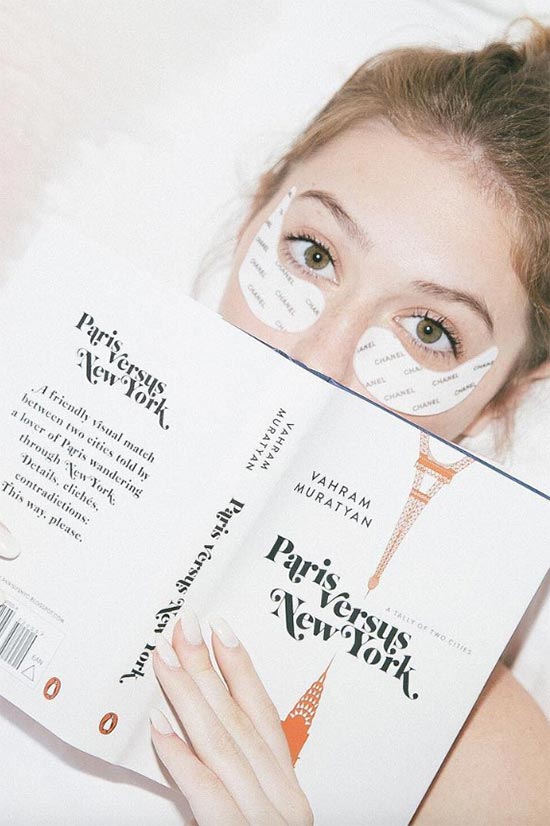Realistically we’re probably wearing under-eye masks in the morning while rushing to get ready, hoping they’ll bring down the puffiness that is a result of a late, alcohol-fueled night. Whatever your masking ritual looks like, it’s undeniable that eye masks and patches are a very nice addition to it that pays special attention to an area of the face that is easy for us to forget about.
Below, we’ll explain why you might want to use eye masks in the first place and also help you learn about the different types of under-eye masks. By breaking it down by eye area concern, we can help you figure out which eye masks will be best for your skin, as well. To finish things off, we’ve got an explanation on how to use all the different kinds of eye masks properly, as well as some extra tips and tricks!
In this article:
- Why Use Eye Masks? Eye Patch Benefits
- Types of Eye Masks
- How to Choose the Best Eye Mask for Your Skin Concerns?
- How to Use Eye Masks?
Why Use Eye Masks? Eye Patch Benefits
Eye masks are eye products meant to have a rapid moisturizing, depuffing or brightening effect on the eye. They don’t necessarily have to be used on a daily basis the way eye creams or serums should be used, since they are meant to have a quick and momentary effect rather than a long-term one. With that being said, the best eye mask would be one that gives both short-term and long-term benefits.
Eye patches often include quick depuffing ingredients like caffeine or cucumber extract as well as deep hydrators like butylene glycol, hyaluronic acid or glycerin. Retinol, licorice root extract, vitamin C, and peptides are the most common active ingredients, which are meant to have long-term brightening and wrinkle-fade effects.
Eye masks are completely different from your typical facial mask, while eye patches tend to be a little similar to sheet masks. The key differences are that their ingredients are ones meant to target typical eye area concerns.
Another big difference between sheet masks and eye patches is that eye patches are normally made up of a material that adheres more tightly to the skin, so that one can easily walk around and be active while wearing them.
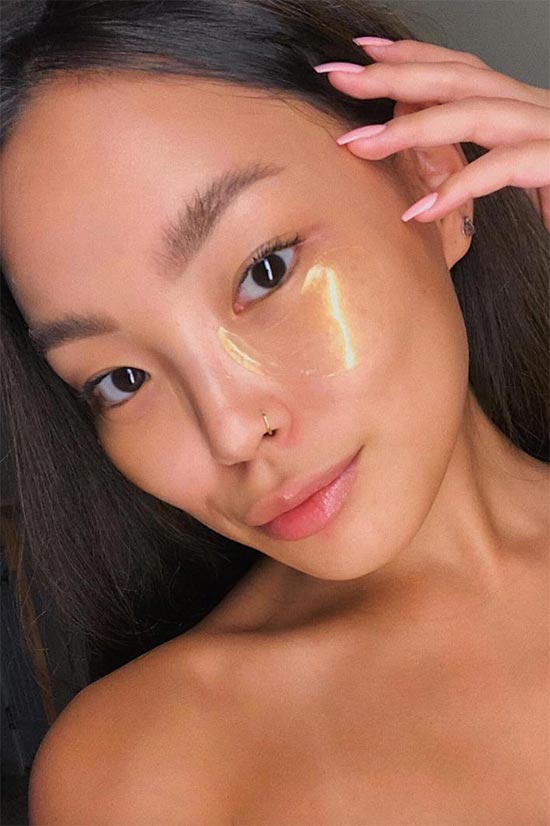
Types of Eye Masks
There are two main categories of eye masks that you’ll find on the market these days: overnight eye masks, which come either in the form of cream or a gel, and single-use eye patches, which are meant to be worn for around 15-30 minutes.
One could argue that the first category is just a fancy way of recategorizing typical leave-on eye products, much in the same way that overnight face masks are just a marketing tactic to rebrand face moisturizers. Whether that’s true or not doesn’t really matter since the real question is whether these products work.
Overnight Eye Masks
Cream Eye Masks
Leave-on eye masks often come in the form of a cream, and we’ll admit that it’s difficult to say exactly what differentiates them from typical eye creams beyond the marketing. Regardless, these types of eye masks usually contain skin-moisturizing and antioxidant-rich botanical oils like shea butter or jojoba oil, as well as humectants like glycerin or hyaluronic acid, and anti-inflammatories like caffeine or arnica.
Gel Eye Masks
While gel eye masks are also a leave-on product, they are often a little bit different from eye gels or eye serums. Their ingredients often include film-formers that create a layer over the under-eye area to aid with absorption.
Beyond that, these eye masks are usually rich in hydrating humectants and might also contain other beneficial ingredients for the eye area like anti-inflammatory and depuffing agents or brightening and resurfacing actives. They have a light texture that is better for those who are prone to milia, a type of keratin plug that can form under the eye.
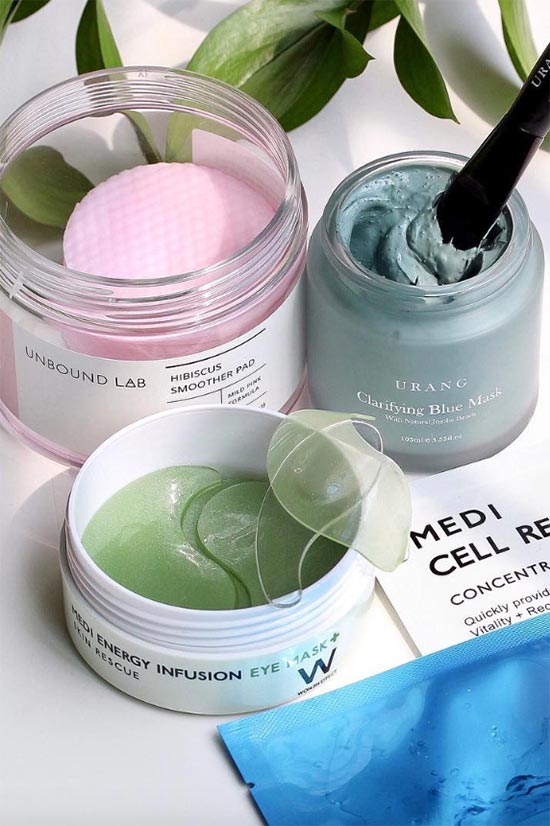
Eye Patches
Eye patches are essential sheet masks for the eye area. They usually come in sets of two, with one for each eye, and are shaped like a teardrop or a half-moon. They are meant to be applied to the under-eye area.
The patch itself is usually made of some sort of plant cellulose or of “hydro-gel”, which usually refers to a solid, gel-like material made of polyacrylic acid. The patch is soaked with an eye essence or serum.
When applied under the eyes the patch acts as an occlusive, ensuring that a maximum amount of the essence or serum penetrates the skin. Once the eye patches are removed, the essence that remains on the skin can be massaged in, so it really is not too different from applying a leave-on gel eye mask.
How to Choose the Best Eye Mask for Your Skin Concerns?
Different eye masks and eye patches target different eye concerns, and you should take your specific skin needs and type into account while choosing one.
Eye Masks for Dehydration
Dehydration refers to lack of water in the skin, and it’s a very common issue around the eyes where there are no oils produced to prevent moisture evaporation from the skin. Since almost everyone experiences dehydration around the eyes, almost all under-eye masks include hydrating ingredients – especially hyaluronic acid, glycerin, butylene glycol, and hydrolyzed proteins.
Some ingredients that counter puffiness under the eyes (especially cucumber extract) might exacerbate dehydration, so it’s important to either choose eye patches or masks that are free of those ingredients or to choose products that contain lots of humectants to counter those effects.
Eye Masks for Dryness
While everyone might experience some dehydration around the eyes, dryness is also possible. Dryness refers to total lack of oils around the eyes, which can be expressed through flakiness and rough texture to the skin. Dryness exacerbates dehydration so the two might come hand in hand.
What do you do if your skin doesn’t produce enough oils around the eyes? Simple! You use creamy eye masks that contain some oils. Jojoba oil, shea butter, olive oil, and sunflower oil are just a few of the botanical oils you will frequently see in creamy eye mask formulas.
Eye Masks for Puffiness
There are two types of puffiness that people often get under the eyes. The first, that is easier to address, is momentary puffiness caused by water retention. Sometimes we suddenly wake up with that kind of puffiness for no discernable reason, although usually it comes after crying or a night of drinking.
Caffeine is the best ingredient for rapidly reducing that kind of momentary puffiness because it’s a great astringent. It tightens the skin quickly after application, making the under-eye area look firmer. Anecdotally, cucumber extract seems to have a similar effect.
Then there is permanent under-eye puffiness caused by build-up of tissue or fat deposits – sometimes this shows up with aging. Unfortunately, permanent puffiness will not be improved with the use of topical products and can only be removed through more invasive cosmetic procedures. While some under-eye masks might have a subtle effect, it won’t be long-lasting.
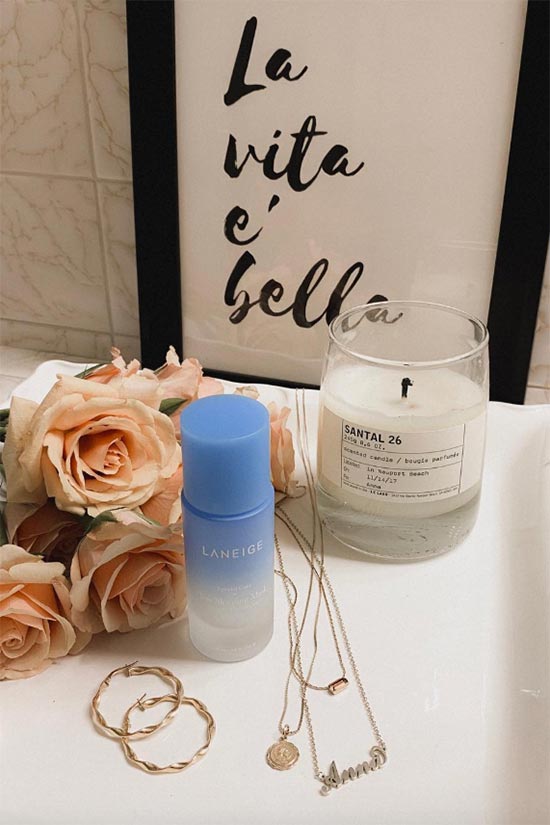
Eye Masks for Dark Circles
There are a few different reasons why people might end up with dark circles under their eyes, only a few of which can be improved with the help of eye masks or eye patches. First, let’s talk about the most frequently complained about types of dark under eye circles, which are unfortunately not going to be fixed with the help of any topical product including the very best eye mask.
First there are blue or purple circles under the eyes that come along with oddly pale skin – these are usually caused by lack of blood circulation, often due to anemia and iron deficiency. Caffeine and vitamin K are said to improve blood circulation and to help treat this, but the evidence is not concrete yet.
Also having simply thinner skin can cause dark circles, which are simply veins showing through the skin. It’s possible that retinol can thicken the skin and reduce the appearance of those kinds of dark circles, but it’s not 100% proven.
The dark circles that are easier to treat with topical ingredients in eye masks are caused by hyperpigmentation, i.e. the overproduction of melanin in the skin. Vitamin C is the most researched ingredient for brightening the skin, so we know it’s effective. It can irritate the eye area at its full strength, but in eye masks it is formulated to be gentler but still effective.
Other ingredients to look for to brighten pigmentation around the eyes include licorice root extract, niacinamide, and retinol.
Eye Masks for Fine Lines
At a certain point almost all of us start thinking about fine lines, especially around the eyes. We might have prevention on our mind, or we might be thinking about fading them.
Eye masks saturated with antioxidant vitamins or natural extracts are a great way of helping fortify the skin against external causes of aging, while keeping the eye area hydrated will also keep it looking plump and strong – just remember that an SPF in the daytime is still the most important anti-aging step.
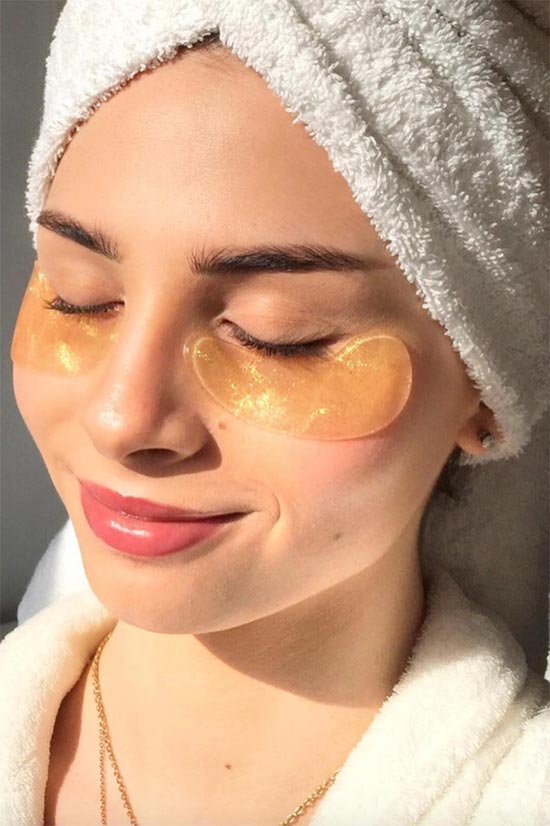
Fading fine lines, on the other hand, is a more difficult endeavor. Once the damage is already done it’s pretty difficult to reverse that, but that’s not to say there is no recourse.
For starters, water-attracting humectants with hyaluronic acid in particular can have an instant plumping effect. They pull moisture into the skin, making it a bit thicker and tighter, and as a result making the fine lines that are caused by loose skin stretch out a bit. The skin ends up looking smoother and more youthful as a result.
However, this is only momentary. In the long term the best ingredients for an eye mask would be ones that help to resurface the skin and contribute to collagen regeneration. Retinol has been proven the most effective at helping with this! The percentage of retinol in skin care products for the face is usually too high for the eyes, but in eye masks it’s formulated to be much gentler.
There is also plenty of evidence that vitamin C is a potent skin regenerator that can promote collagen regeneration. We are starting to see peptides also being promoted for the same effect, and while they’re not concretely proven to work, the early research is promising, and they definitely do not hurt.
Eye Masks for Sensitivity
Because the skin under the eyes is much thinner than the skin on other parts of the face many people find that it gets irritated more easily. If you have sensitive skin under the eyes then you want an under-eye mask formulated with lots of skin-soothing anti-inflammatories along with the typical skin-fortifying antioxidants and humectants that will hydrate and protect your skin.
The common ingredients we see in eye masks to help with irritation and redness are the extracts of calendula, green tea, arnica and chamomile. Caffeine is also an anti-inflammatory, but it has a tightening effect that doesn’t always feel nice for those with sensitive skin.
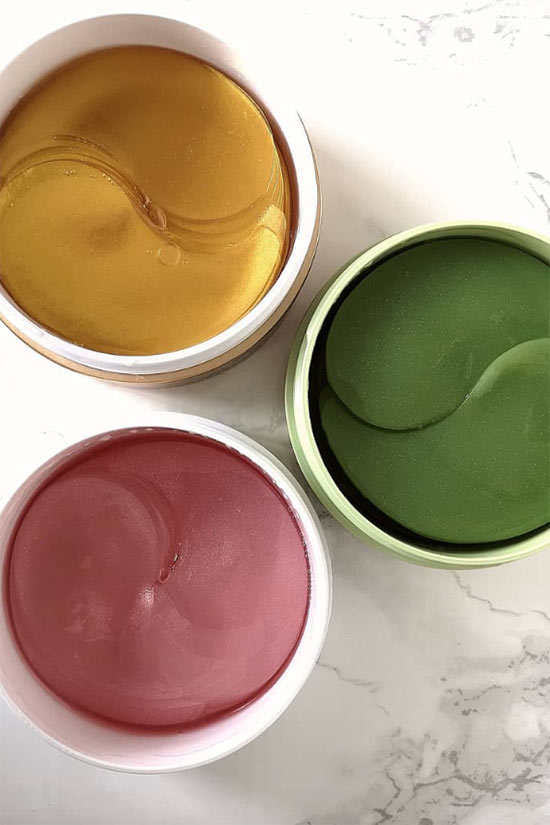
Eye Masks for Milia (Bumps)
Some people are very prone to developing tiny white keratin plugs under the eyes, known as milia. Topical skin care can definitely help treat these bumps, which look like whiteheads but have a harder texture.
In fact, the best ingredient for dealing with milia is retinol, which you’ve seen show up in a lot of the best under-eye masks on the list. Salicylic acid is another great ingredient for milia, but it’s more common in eye serums.
The important thing if your skin is prone to developing these keratin plugs is to avoid oily creams and eye masks, as they can exacerbate the issue. Gel eye masks and eye patches are perfectly fine, however.
How to Use Eye Masks?
Using eye masks is pretty easy, as these products are quite versatile. You can choose to use under-eye masks every night, especially if you’re looking for long-term results from an active ingredient like retinol or vitamin C, you can just use them just a few times a week as a boost to your typical routine, or you use them sporadically whenever you think your eyes are looking tired and need a quick fix.
Overnight eye masks are easiest to use in the evening because of their texture, while eye patches can be used any time of day. If face masks are already part of your beauty routine, you can use your eye masks at the same time!
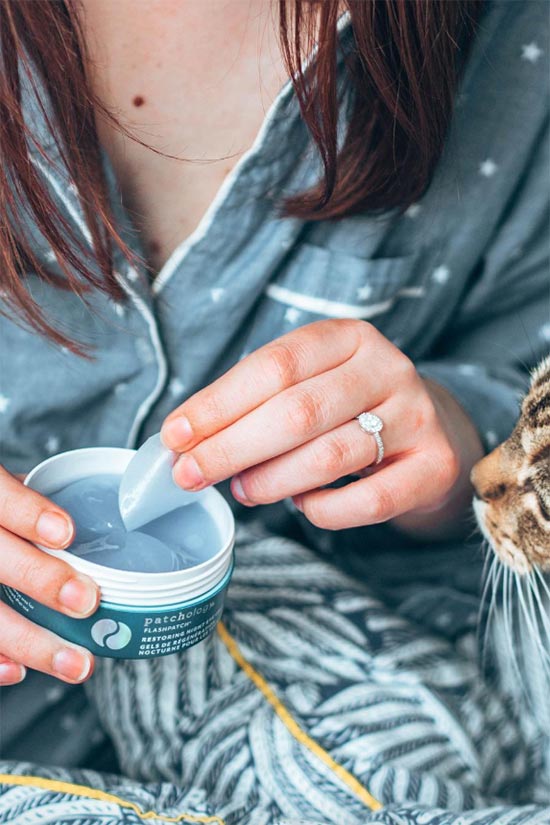
- No matter the eye mask you use, you should always start out with clean skin. Remove all traces of eye makeup, sunscreen, dirt, and grime from the day.
- You can use a makeup remover with a cotton pad, or your typical facial cleanser if it’s gentle and thorough.
Using Gel Eye Masks
- Gel eye masks and eye patches should be applied directly to clean skin.
- Gels can be smoothed on under the eyes with the aid of your ring finger. You can also use a tapping motion if you prefer.
- Since gel eye masks tend to include film-forming ingredients, make sure to remove them with a damp cotton pad or face cloth in the morning before applying day creams, SPF, and makeup.
Using Eye Patches
- Eye patches are a little tougher to apply, since it is important that there is no bubbling and that all parts of the patch adhere to the skin. The best way to be sure of that is to start by attaching the eye patch to the inner-corner part of the clean under-eye, while holding it taut on the other end. Use your ring finger to smooth the eye patch against the skin and get rid of any pockets of air.
- Once 15-20 minutes have elapsed and the eye patch starts feeling a little dry, remove it and pat the rest of the gel into the skin. You can follow it up with an eye cream, moisturizer, or SPF product if you’ve used it in the morning.
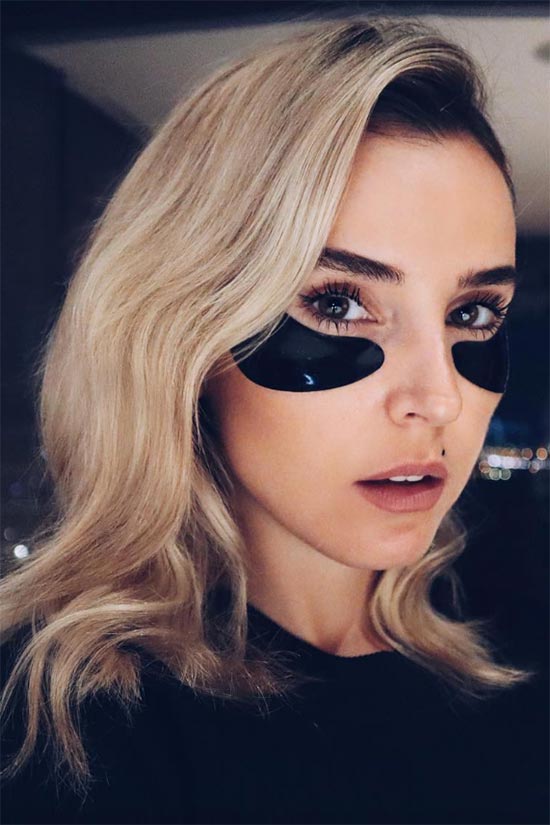
Applying Cream Eye Masks
- Cream-based overnight eye masks can be applied directly on bare skin, but they can also be layered over eye serums or eye gels. The occlusive ingredients in them will help ensure that the serum penetrates thoroughly into the skin.
- Use your ring finger to apply a very thin layer of cream. About 0.1ml is all it takes to load the skin up with all of the beneficial ingredients in the eye mask, and any more would just go to waste.
- If you’re applying the mask in the daytime, remove whatever hasn’t been absorbed into the skin after 15-20 minutes with a cotton pad, and follow up with the rest of your skin care and makeup routine.
Eye Mask Tips and Tricks

- If you need a quick fix and don’t have a good eye product sitting around, you can make your own eye patches by cutting out tear drop shapes from a hydrating or soothing sheet mask.
- You can also try making your own eye patches by cutting a cotton pad in half and saturating it with your favorite eye-safe skin essence.
- A frequent area of complaint for premature signs of aging is the nasolabial fold, which tends to get deeper as we age. You can try applying your under-eye patches along the nasolabial fold to treat that area and momentarily soften the lines there.
- For an extra soothing experience, keep your eye masks in your beauty fridge. They’ll be nice and cool when you put them on, which will make them do a better job of depuffing and refreshing the eye area.
- If you really like getting into the DIY spirit, then you can even try putting together your own eye mask! For a hydrating and soothing boost to the eye area, put into a shallow bowl of hot water a ¼ teaspoon of matcha green tea water and a ¼ teaspoon of honey. Mix everything together, making sure that the honey melts.
Put the mixture in the fridge to let it cool. While the mixture is cooling take a cotton pad and cut it in half. If you’re an overachiever, you can try and shape each half of the cotton pad into a crescent shape that will fit better under your eyes.
Once the mixture is nice and cold, saturate the cotton pad halves in it, and then place them under your eyes. Leave them on for about 15 minutes, and then wipe everything off and finish with a layer of moisturizer or eye cream. Your eye area should feel a little refreshed and nourished!
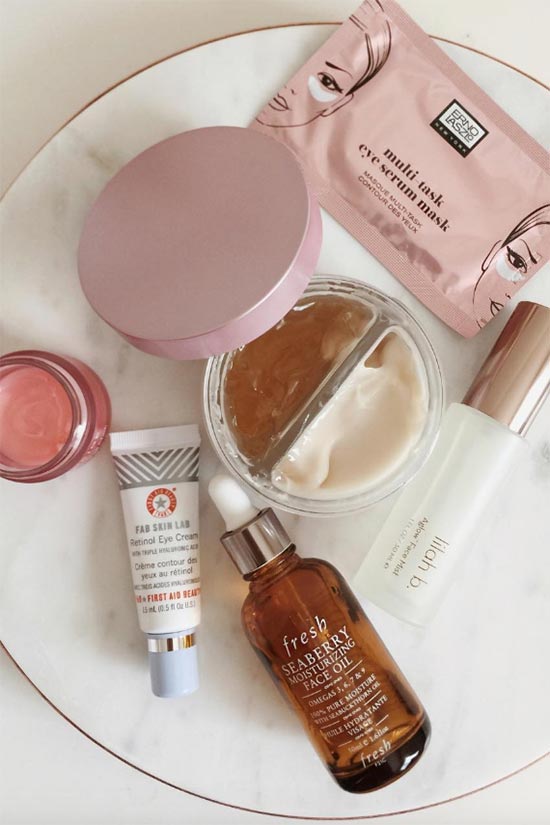
Photos via @karsen_liotta, Instagram

